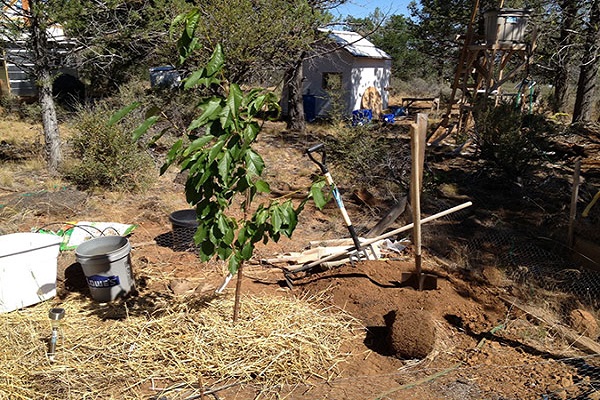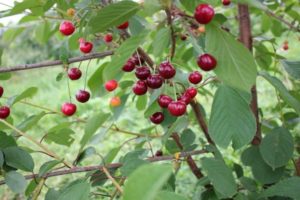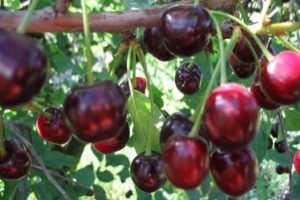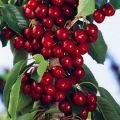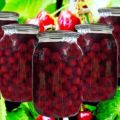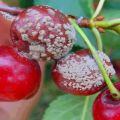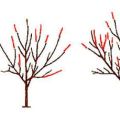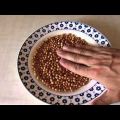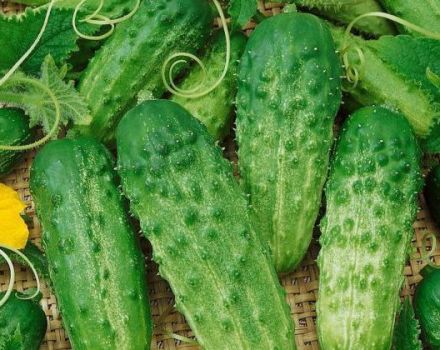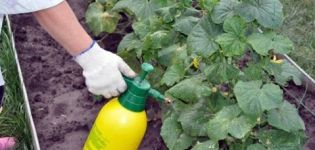The best self-fertile and undersized cherry varieties for growing in central Russia, planting and care
How to grow a tasty and healthy berry on the site, avoiding common mistakes novice gardeners. It is required to choose the right varieties of cherry varieties for the middle lane. Half of the success depends on this. If a species is not suitable for growing under certain conditions, then all other positive characteristics are useless.
The climate of central Russia
This region is very vast, its climate is defined as temperate continental. The temperature in winter ranges from -8 ⁰C to -12 ⁰C. In summer it is + 17 ... + 28 ⁰С.
Winters are moderately frosty, but snowy, while summers are humid and warm. Therefore, gardening is fully developed. Many varieties of cherries are suitable for cultivation in this region. But there are signs that you definitely need to look at when choosing.
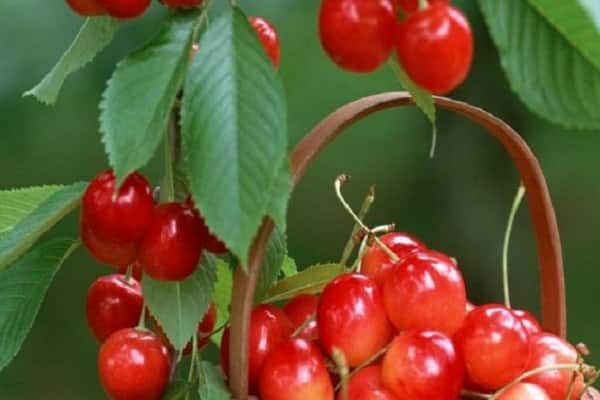
Recommended varieties for the region
A summer resident who decided to start cultivating cherries on the site should pay attention to the following subtleties when choosing a variety:
- Winter hardiness of plants is an important criterion to be guided by. A heat-loving plant does not tolerate temperature drops very well. Therefore, the higher this indicator is, the better.
- The low growth of cherries allows you to throw all your strength into the formation of fruits, paying less attention to the crown. This is the advantage of low trees.
- Flowering should be late, since in the climate of the middle zone, return spring frosts are often observed. They are capable of ruining the future harvest. Breeders breed varieties whose fruit buds are not afraid of a slight drop in temperature. You should pay attention to them.
- Self-fertility or self-pollination is an irreplaceable sign of a fruit tree. In this case, the tree does not need pollinators, it can pollinate itself.
The best varieties are those that have all of the listed characteristics.
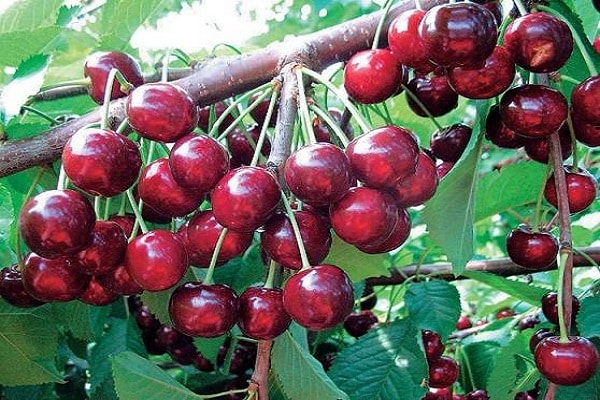
Winter hardy
An important indicator of the variety that affects the yield. The better the cherries survive the winter, the more abundant the harvest will be. Unstable weather in winter has a detrimental effect on the general condition of the tree. It can die as a result. The summer resident will not only not get the harvest, but will also lose the plant.
The higher the degree of stability, the better. This indicator is one of the most important.
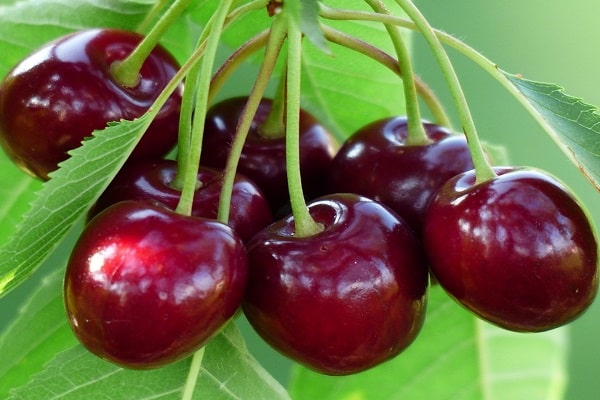
This category of varieties includes:
- Iput, perfectly resists frost. Fruits are large, red in color, sweet taste and highly tasting.
- Gronkavaya, in addition to a high degree of frost resistance, has a number of other advantages, thanks to which summer residents choose it for planting. The berries have a sweet and sour taste. Cherry is used for any processing method. Needs to grow in the neighborhood of other pollinating varieties.
- Red hill. Resistant to low temperatures, large-fruited and unpretentious. Care requires the formation of a crown and cultivation by a number of pollinators, since it is sterile in itself.
- Ovstuzhenka. Partially self-fertile, winter-hardy sweet cherry with fruits of standard taste characteristics. Ripens early, fruits are harvested almost simultaneously.
- Veda. A productive frost-resistant cherry variety, large fruits, weight up to 5 g. Easy to care for, does not tolerate drafts and strong winds.
- Odrinka. The fruits of this cherry are dark, almost black, and have a dessert purpose. But they are also used for processing. Weight reaches 7.5 g. It winters well and gives a bountiful harvest.
- Jealousy is partially self-fertile, gardeners grow other types of cherries together with it, this helps to increase yields. The fruits are large and very tasty. Used in cooking.
There are many winter-hardy varieties, but in order to obtain an excellent harvest, it is recommended to pay attention to other equally important criteria.
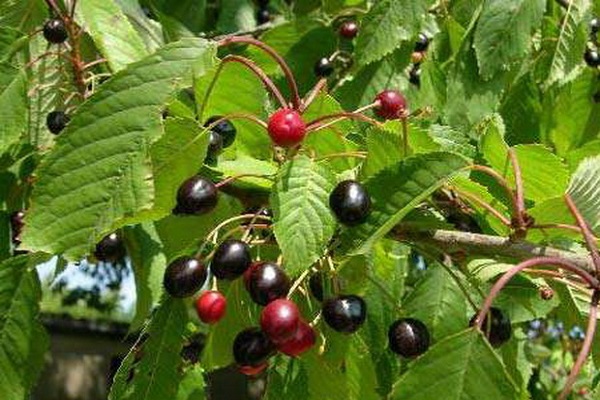
Yellow-fruited
Such varieties of cherries are preferred by those gardeners who do not want to pay much attention to caring for the tree. Often, such varieties of cherries are more unpretentious than red-fruited. In addition, they have one important property, they absolutely do not attract birds.
List of yellow-fruited varieties:
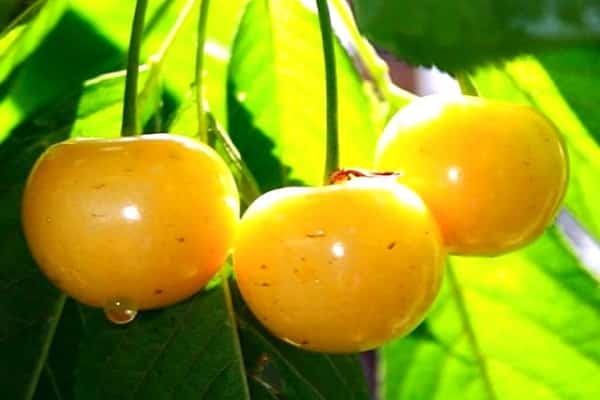
- Drogana Yellow. The variety was bred for a long time, over the years its positive reputation has only strengthened. Summer residents love it for its unpretentiousness and consistently high fruiting, regardless of weather conditions. The weight of the fruit reaches 8 g. The taste is sweet, for this reason it is consumed only fresh. Berries do not tolerate transportation well. The yield is 30 kg per tree. Immunity is stable, the tree is not susceptible to fungal diseases.
- Leningradskaya Yellow. The berries weigh 3.5 g and taste sweet. The average yield is 15 kg per tree. Unpretentious in care, sweet cherry becomes a favorite on any site.
- Orlovskaya Amber. Average weight 5.5 g. Dessert appointment, as it has a sweet taste and loose flesh. With proper care and compliance with agrotechnical requirements, up to 35 kg of berries are harvested from one tree.
- Household Yellow. A popular variety among summer residents. Conquers with its unpretentiousness, harvest volumes and field health. The taste is sweet and sour, the fruits ripen at the same time. Up to 15 kg of berries are obtained from the tree.
Yellow cherry is very tasty. Care requires minimal, and its benefits are no less than that of other varieties.
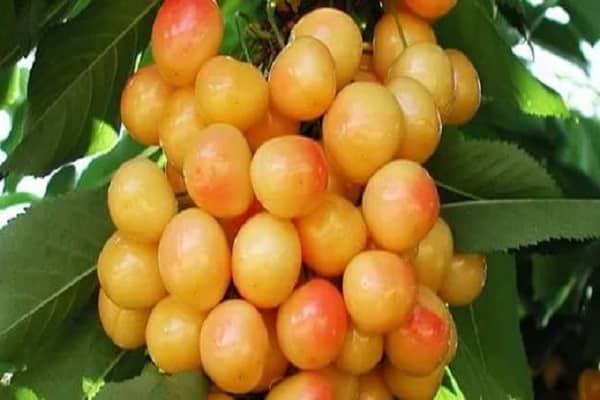
Undersized and dwarf
Low varieties of cherries are suitable for growing in the middle lane for the reason that, due to bad weather, the tree is not able to form both fruits and crown. Therefore, it throws all its energy into growing green mass, forgetting about the harvest. With dwarf and undersized varieties, this problem will not arise.
In addition, it is easier to harvest and care for these trees. The height of such trees does not exceed 2-3 m. The crown shape is cylindrical. The tree itself consists of a main trunk and short skeletal branches.
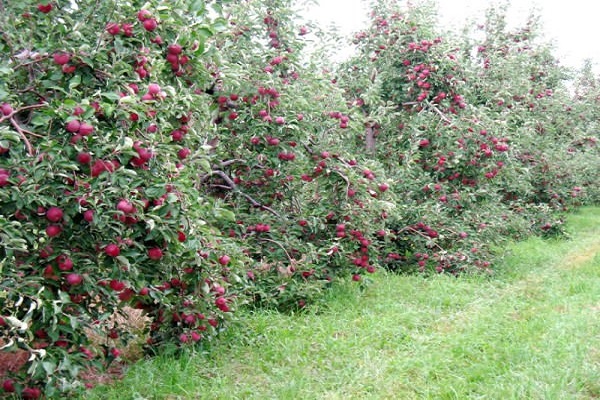
The disadvantage of such sweet cherries is that they are more demanding on the place of planting and care.
Dwarf trees have a medium-dense crown, so the fruits receive enough light and oxygen. A summer resident should weigh all the pros and cons before deciding to grow such varieties.

Self-fertile and early fertile
The variety of cherry varieties allows the summer resident to choose the type that suits the needs of the family.Self-fertile cherries are in demand among those summer residents who do not have the opportunity to grow several varieties. Such cherries do not need additional pollinators. Self-pollinated varieties:
- Backyard Yellow;
- Bereket;
- Goryanka;
- Tyutchevka;
- Danna;
- Dolores;
- Pridonskaya.

There are few varieties capable of self-pollination, but they are. The summer resident must carefully study the characteristics of the variety, then decide which one is right for him.
Early-growing varieties are cherries that ripen quickly. Basically, trees give the first harvest in the 5th year of life, but there are also such varieties that are capable of giving the first harvest already in the 3rd year after planting in a permanent place.
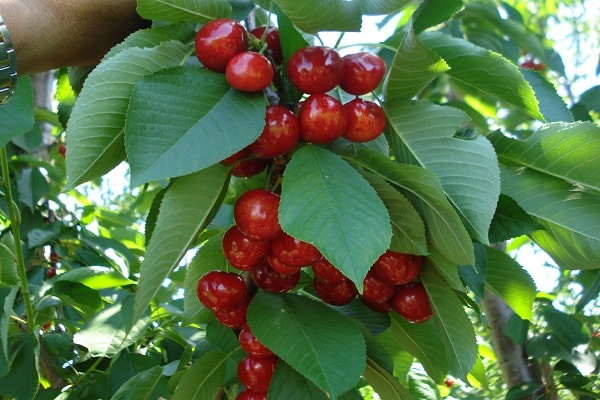
Sweet
Most varieties of cherries have a sweet taste, so almost all varieties fall into this category. Some of them ripen quite late, but the grower decides for himself which characteristics of the variety are most suitable for him.
Timing and methods of planting a tree
It is not difficult to grow cherries on the site, it is necessary to observe the peculiarities and subtleties of planting plants on the site. And then the tree will thank you with a high stable yield.
We plant in the spring, say some gardeners, better in the fall - others answer them. The decision-making remains with the summer resident. Given the climatic features of the middle zone, you can plant cherries in spring, and in the fall. But until a certain time. In spring they are planted before buds appear, in autumn until early October.
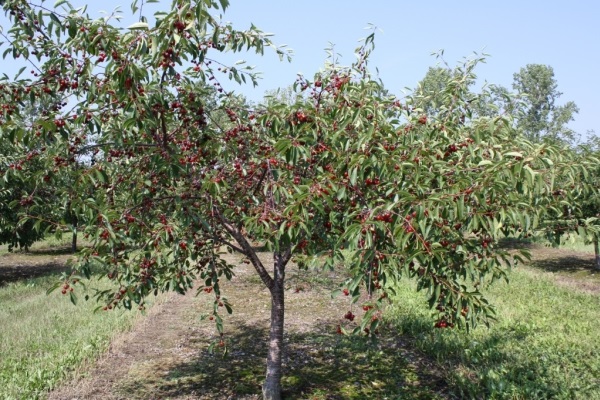
Tree planting methods:
- the longest of the bone;
- layering;
- undergrowth;
- vaccination.
The method of growing a fruit tree depends on the summer resident and his desires. The easiest method is to plant the shoots, the most difficult is to vaccinate.

Cherry care
Half of the success depends on how well the gardener takes care of. Requires compliance with standard agrotechnical requirements:
- fertilizers;
- glaze;
- loosening;
- weeding;
- mulching.
Following these techniques will help you achieve positive results.
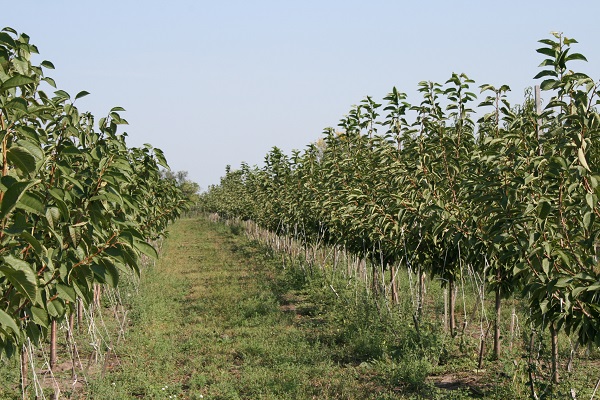
Top dressing and watering
It is necessary to care for cherries from the first days after planting. The tree needs moisture. Watered once every 10 days in dry weather and 2-3 times a month in wet weather.
Top dressing is carried out immediately after planting. Organic and mineral fertilizers are added to the soil for backfill. This will be enough for the first year. Then, in subsequent years, organic matter is applied once a season and complex mineral fertilizers are applied 2-3 times.
Fruit ripening requires efforts from the tree, therefore it is recommended to feed the plants at this time. Use organic or nitrogen-containing fertilizers.
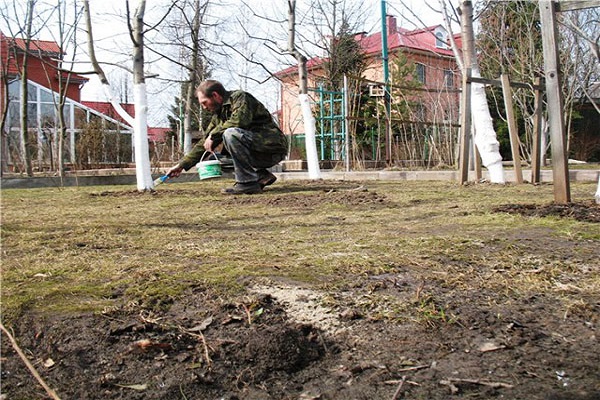
Crown formation
Each variety treats this differently. Columnar and tall varieties are especially in need of formation. It is recommended to limit their growth. Therefore, formative pruning is done every spring and fall.
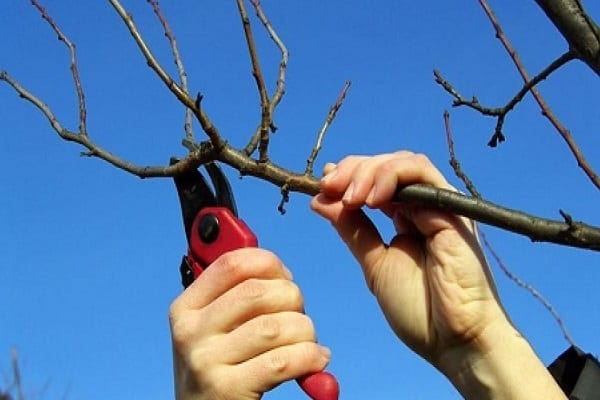
Diseases and pests and their control
There are varieties that are resistant to fungal diseases. Such trees are not cultivated. For prevention, it is recommended to spray every spring, this will help the cherry to fight the pathogens.
Insects that do not mind eating fruits and other parts of the tree are also subject to destruction. Traps with sweet contents are prepared for them, then they are destroyed.
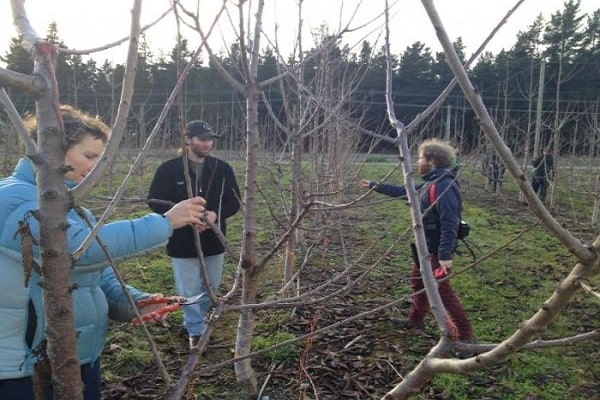
Preparing cherries for wintering
So that the tree does not die and continues to produce crops, you need to properly prepare it for winter. Feed with complex fertilizers, then wrap up if the variety is not winter-hardy. And the tree will calmly endure the harsh winter of central Russia.
Cherry growing is a simple process. Following the recommendations of experienced summer residents, they get a high yield.
